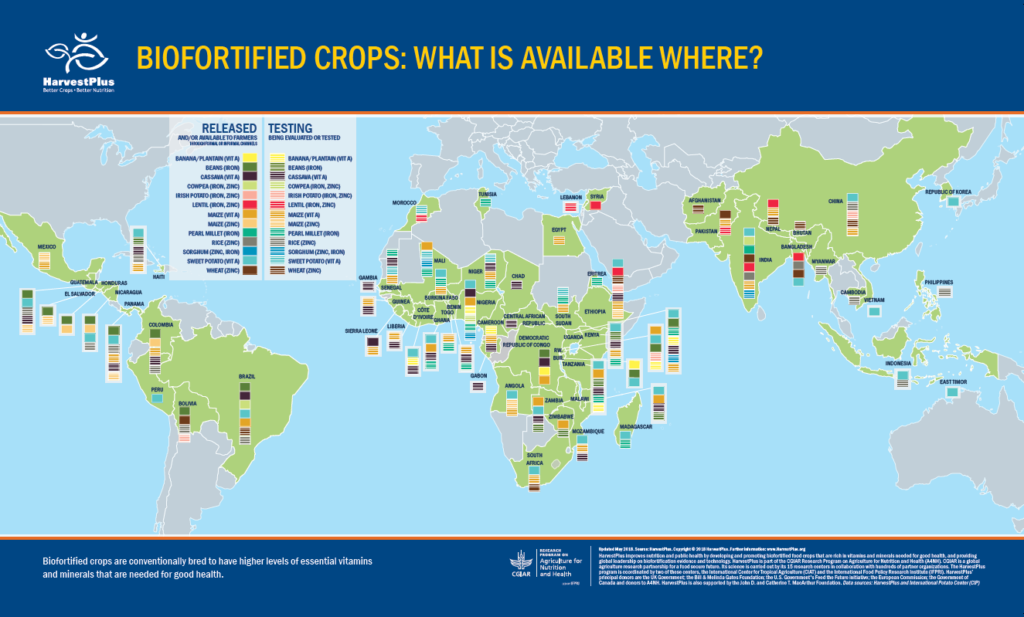The diets of more than two billion people lack essential vitamins and minerals, making them vulnerable to disease and disability. But as our latest crop map shows, the global effort to end this hidden hunger is gaining momentum, thanks to hundreds of partners around the world.
To date, more than 290 biofortified varieties of 12 staple food crops have been released or are in testing in more than 60 countries around the world.
Biofortification uses conventional crop breeding techniques to increase the nutritional value of the staple foods consumed most widely by low-income families in Africa, Asia and Latin America, including cassava, maize (corn), beans, sweet potato, millet, rice, and wheat. Experts in nutrition and agriculture work together to ensure these new, healthier foods have sufficiently high levels of nutrients, taste good, are easy to cook, and have the traits that farmers need—resistance to insects, diseases, and the effects of climate change.
More than 30 million people are now growing and eating one or more of the twelve crops biofortified with vitamin A, iron, or zinc—micronutrients identified by the World Health Organization as the most important for health. The goal is to scale up delivery so one billion people worldwide will be reaping the nutritional and agronomic benefits of these crops by 2030.
